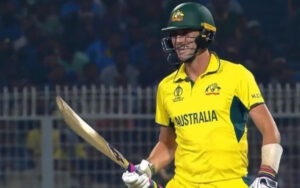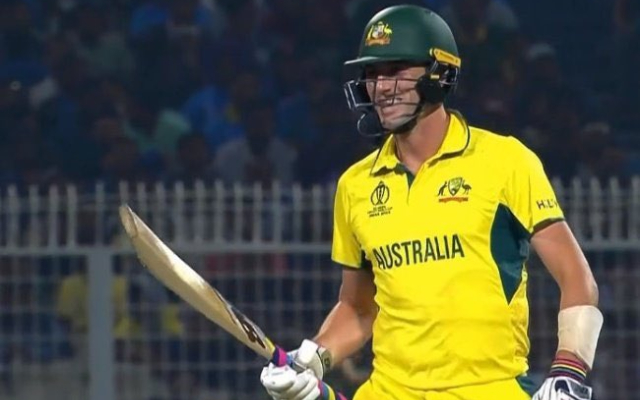
His name is not mentioned in discussions on the coolest captains. He does not figure in the lists of top bowlers or batters in this World Cup. He is not among the most influential players when it comes to ODIs. But in his own and quiet ways, Pat Cummins has stood tall.
He is not the prototype of a typical Australian captain. He does not shoot his mouth off. There is no aggression in his body language, no berating the opponent or provocative statements. Unlike some of his famous predecessors, he does not play mind games before matches. Cummins the commander embodies calmness.
The captain revived a faltering Australian campaign in this World Cup in the third match against Sri Lanka. After two straight defeats, the five-time champions saw Sri Lanka get off to a flier of a start. Things were looking ominous.
That’s when Cummins took it upon himself. He brought himself back into the attack in the 21st over, dismissed both openers, hauled his team back in the game and then left the centre stage for others to complete the job. Australia have not looked back since. They have made it to the final for the eighth time, having won eight successive games.
Cummins is seldom in the limelight. He leads from the front but remains in the background. He is not among the glam boys of cricket despite his handsome looks. He is not a T20 star despite his multi-faceted talent. He is not a rage on social media either. He does his job in a subdued manner, almost like an outsider. The true meaning of what he has done is understood only after he has finished the task and walked away.
Having taken over the reins of the team at a difficult period, when the selectors were struggling to find a captain to replace Tim Paine in Tests and Aaron Finch in ODIs, Cummins initially came across as an unlikely choice. Perception was, and still is, that fast bowlers do not make good captains. This towering man from Sydney has changed that, along with the fortunes of his team.
His role in the game against Afghanistan, which will be remembered for Glenn Maxwell’s double century, was remarkable. Had he not played 68 balls for an unbeaten 12 in that 202-run partnership for the eighth wicket, things could have been different. It’s not easy to dead-bat everything when you can play a few shots. Cummins showed exemplary restraint in curbing his instincts that day.
In the semi-final against South Africa, Cummins once again orchestrated things from the backstage. He took a difficult catch to send back Quinton de Kock. Such catches lift the morale of a team. His decision to give extended opening spells in helpful conditions to Mitchell Starc and Josh Hazlewood worked like magic as both took wickets in their sixth over.
Not to be left out, he came back after an expensive first spell to take three wickets. He had David Miller smelling blood to contend with. Cummins’s response was a clever barrage of slow bouncers. Almost his entire final spell was about these deliveries outside the line of the left-hander’s off stump. A frustrated Miller eventually lost his wicket. These late blows were instrumental in Australia restricting South Africa in a low-scoring match.
Because Cummins’s efforts in the field are not as visible as batter-captains like Rohit Sharma or Kane Williamson, he is not mentioned in the same breath. But the galvanising effect he has brought to the Australian team cannot be overlooked. And this has happened without noise. Australia may or may not win the World Cup, but they will feel the benefit of having Saint Patrick as captain well beyond that.




